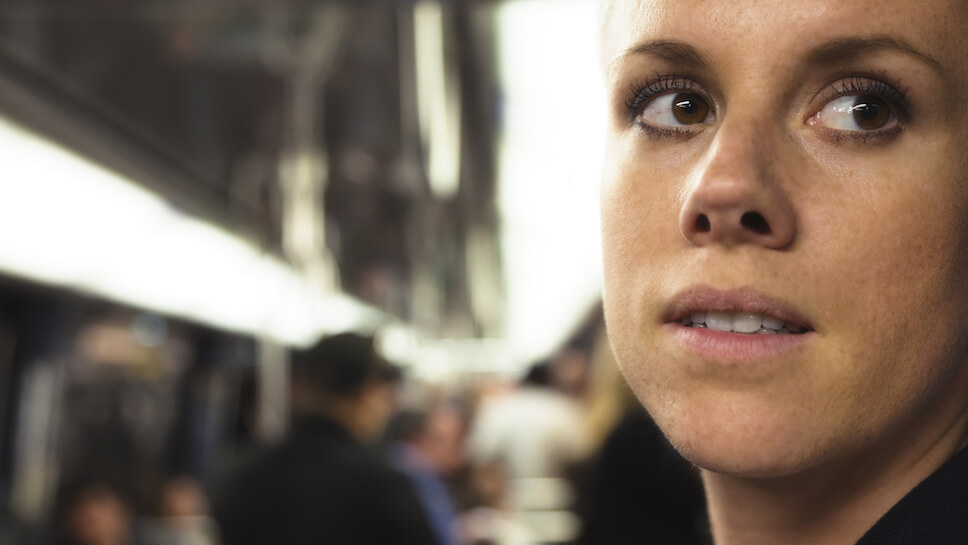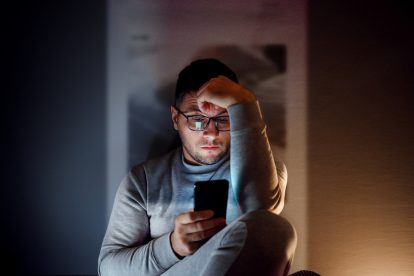
What Is the Difference Between Social Anxiety and Social Phobia?
Social anxiety and social phobia are often used interchangeably. But there is some distinction between social anxiety and social phobia, specifically in the situations that trigger stress responses. Social phobia refers to the fear of being scrutinized and judged while performing some type of task in public, while social anxiety describes feelings of intense nervousness and self-consciousness that sufferers experience during one-on-one meetings or group social gatherings. The symptoms of both are now included under the umbrella of social anxiety disorder, which is the official diagnosis for people who suffer from excess social anxiety in a broad variety of situations.
Social anxiety disorder is a condition that affects 15 million men and women, which represents about seven percent of the adult population in the United States. Millions of children and adolescents also suffer from severe social anxiety symptoms, since the disorder tends to develop at relatively young ages (the average age of onset is 13).
Despite its ubiquity, it was not until 1994 that the term ‘social anxiety disorder’ was mentioned in the official medical literature (in the American Psychological Association’s Diagnostic and Statistical Manual of Mental Disorders, 4th edition, also known as the DSM-IV). Before that, the only clinically diagnosable form of social anxiety was known as social phobia, and even that was only mentioned for the first time in the DSM-III, which was published in 1980.
What is Social Phobia?
Even though social phobia is now used primarily as an alternate term for social anxiety disorder, there are distinctions between social phobia and social anxiety, which were frequently discussed in mental health literature in the past. Social phobia is actually a specialized condition that affects people somewhat differently than social anxiety.
When the American Psychiatric Association chose to list social phobia as an actual disorder in its official diagnostic manual, the term was not seen as synonymous with social anxiety. Social phobia as a medical disorder referred specifically to extreme fears of performing some type of activity in public, where others were free to observe or comment.
Some of the activities that can provoke distress in social phobia sufferers include:
- Making presentations at work
- Eating in crowded restaurants
- Using public restrooms
- Taking public transportation
- Signing their name in public settings (banks, grocery stores, etc.)
- Exercising in gyms or outdoors in areas where people are present
- Public speaking
- Artistic performances (playing a musical instrument, singing, or acting in a community theater presentation, etc.)
Social phobia develops out of excessive self-consciousness combined with a lack of confidence and shaky self-esteem. People with social phobia are afraid of making a mistake while in the spotlight, fearing harsh and catastrophic judgments if they do so. Their fear of embarrassment in such situations is off-the-charts and difficult to manage.
The Difference between Social Anxiety and Social Phobia
When social anxiety disorder replaced social phobia as a category for diagnosis, it incorporated the symptoms of both social anxiety and social phobia under its broad diagnostic umbrella.
Nevertheless, there is a difference between social anxiety and social phobia. The former refers to the fear and anxiety experienced before and during conversations and other direct social interactions, while the latter covers fears and insecurities connected to public performance.
What social anxiety sufferers experience during a broad range of social encounters was previously defined as social interaction anxiety. It was known that men and women with social phobia often suffered from anxiety when they encountered strangers or casual acquaintances, but this was not recognized as a clinically diagnosable disorder until the changes in the DSM in 1994.
The lesser status formerly afforded social anxiety was unfortunate. For most social anxiety disorder sufferers, their problems with direct socializing and communication are more serious and life-limiting than their social phobia, which often occurs in situations that can be avoided without significant life consequences.
Feeling uncomfortable and anxious during work meetings is not pleasant. But being too intimidated to even interview for a job is far more serious, and that is exactly what happens to many social anxiety sufferers because of their fear of interacting with authority figures. Social anxiety also interferes with the ability to make friends or pursue romantic relationships, which is perhaps the most severe and depressing consequence for social anxiety disorder sufferers who don’t get help for their conditions.
The Physical, Emotional, and Behavioral Symptoms of Social Phobia and Social Anxiety
Whatever distinctions may exist between social phobia and social anxiety, both produce the same types of physical, emotional, and behavioral symptoms, and within the same range of severity.
Physical Symptoms
Social anxiety symptoms are often compared to the “fight or flight” response, where the body mobilizes rapidly to escape from danger.
From the perspective of those on the social anxiety spectrum, being exposed, scorned, and rejected based on poor social or public performance is a catastrophic event. That is why people with severe social phobia and/or social anxiety react so strongly to situations that others handle with little or no nervousness or self-consciousness.
The distinctive physical symptoms of social anxiety and social phobia are consistent with a mild-to-severe panic attack, and may include:
- Dizziness
- Sweating, but also shivering as if cold
- Blushing
- Racing heartbeat
- Constricted breathing
- Muscle tension in the face and neck
- Stomach cramps or pains
- Rapid or stumbling speech
- Mental blocks that make it hard to think or absorb information
These symptoms can occur both during or before a situation that social anxiety or phobia sufferers find stressful or fear-generating.
Emotional Symptoms
While engaged in activities that cause discomfort, social anxiety and social phobia sufferers are obsessively self-conscious and overly aware of their own words, thoughts, and actions—and they assume others are watching them and evaluating them with a skeptical or hostile eye.
If their performance in social situations or while out in public is anything less than impeccable, they worry they’ll be judged as weak, inferior, incompetent, unintelligent, or unworthy of respect.
The more precarious and uncomfortable a situation seems, the more scared they are that they’ll do or say something embarrassing or humiliating, something they’ll never be able to live it down.
None of this is reasonable or rational, neither in its anticipation of negative reactions nor in its assumption that being negatively judged by others is a tragedy. During moments of clarity social anxiety and phobia sufferers realize this, and they often feel ashamed about the depth of their fears and their tendency to expect the worst.
But simply realizing their fears are irrational is not enough to make the emotional symptoms of social anxiety fade away. It takes time, effort, and usually long-term therapy to reprogram the brain to lessen the severity of these ingrained patterns of response.
Behavioral Symptoms
Avoidance of threatening, intimidating, or unfamiliar situations is the primary behavioral symptom of social anxiety and social phobia. People with social anxiety problems develop routines and patterns of behavior designed to minimize their exposure to situations that induce stress and tension, and in general this strategy works well as an anti-anxiety remedy.
But finding work, love, friendship, and purpose can be difficult if not impossible for men and women who allow their social fears to run their lives. The fear of interpersonal interactions that haunt people with social anxiety, and the inhibitions about performance that keeps social phobia sufferers from expanding their horizons, are obstacles that must be overcome if happiness and success are to be achieved.
Begin Your Recovery Journey.
877-727-4343Getting Treatment for Social Anxiety Disorder
For those who suffer from social anxiety disorder, the symptoms it encompasses can seem overwhelming. But treatment for social anxiety disorder has a proven track record of success, against social anxiety and social phobia in whatever form they appear.
Highly-trained and experienced mental health professionals can accurately diagnose the presence of social anxiety disorder based on its physical, emotional, and behavioral symptoms. Once such a diagnosis has been made, they will work with social anxiety and social phobia sufferers to design comprehensive treatment programs that address all existing mental health issues, including those connected to co-occurring disorders.
Such a healing program will likely be centered around individual and group psychotherapy, with medication possibly prescribed as well. Life skills and social skills classes may also be offered, to help patients learn how to cope with their anxiety symptoms as they expand the depth of their knowledge about their disorder. In addition, holistic healing practices can further assist social anxiety sufferers who need help controlling their stress responses.
While outpatient therapies are essential to the long-term recovery of social anxiety disorder sufferers, the most effective course of action is to begin treatment at a licensed mental health treatment facility that offers intensive inpatient services. By focusing completely on the healing process in the early stages of recovery, in a supportive environment surrounded by others who understand the immense challenges posed by social anxiety, people with social anxiety disorder can dramatically boost their chances of ultimate success.
It has now become standard practice to use the terms social phobia and social anxiety interchangeably. But there are some subtle differences between the two that should still be acknowledged. If treatment is to succeed, all the symptoms of social phobia and social anxiety must be acknowledged and confronted, in whatever form they manifest.





